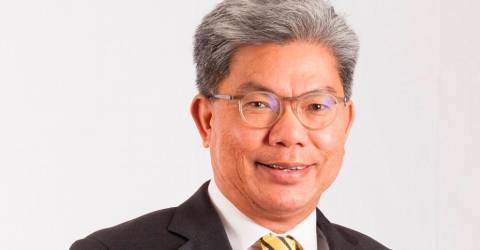PETALING JAYA: Malayan Banking Bhd (Maybank) has established its Scope 3 financed emissions baseline and identified a transition strategy that will shape its future business portfolio, the first bank in Malaysia to do so.
This brings the bank a step closer to its target of net zero carbon equivalent position by 2050 as it begins to chart out its financed emissions reduction targets against timelines.
For banks, financed emissions are indirect emissions related to loans, underwriting, investments and any other financial services. Financed emissions are a necessary input for climate scenario analysis, which is crucial in managing climate-related transition risks and opportunities.
In undertaking this exercise to establish its financed emissions baseline, Maybank adopted the Global GHG Accounting and Reporting Standard for the Financial Industry by Partnership for Carbon Accounting Financials. This methodology focuses on calculating the emissions for six asset classes, namely listed equities & corporate bonds, business loans & unlisted equities, project finance, commercial real estate, mortgages and motor vehicle loans.
Listed equities & corporate bonds, business loans & unlisted equities and project finance make up close to 80% of the group’s financed emissions. The top five sectors contributing to most of Maybank’s financed emissions are power, oil and gas, agriculture, utilities and construction. About 97% of Maybank’s financed emissions come from its home markets Malaysia, Singapore and Indonesia.
By calculating and analysing the financed emissions data, Maybank can now progress towards performing quantitative scenario analysis to design pathways in reducing its financed emissions in line with its risk appetite and targets while engaging customers to support them to achieve their desired outcomes and commitments.
Maybank group president & CEO Datuk Khairussaleh Ramli (pix) said a critical aspect of achieving a net zero carbon position includes establishing the bank’s Scope 3 baseline financed emissions, analysing the main drivers of the emissions, designing a plan to reduce these emissions against a timeline and finally, implementing the plan.
“This exercise has allowed us to split our emissions by geographies, asset classes and sectors, which then allows us to focus our efforts in engaging with the customers that can have the greatest impact on reducing our financed emissions over the long-term. Our next step is to engage and collaborate with our customers and key stakeholders including regulators and ministries to implement our transition strategy,” he said in a statement today.
Maybank’s transition strategy will focus on the top five sectors over the medium-term. The aim will be to support customers to decarbonise, accelerate the rollout of differentiated investments in sustainable financing and to lead capability- and solutions-building within the industry.
Maybank has committed to achieving a carbon neutral position for Scope 1 and 2 emissions by 2030, and net zero carbon equivalent position by 2050. The bank has already reduced 41.1% of its Scope 1 and 2 emissions against its 2019 baseline as of June 30, 2022, with the commencement of the Malaysia Renewable Energy Certificates and the rollout of various energy efficiency programmes.
